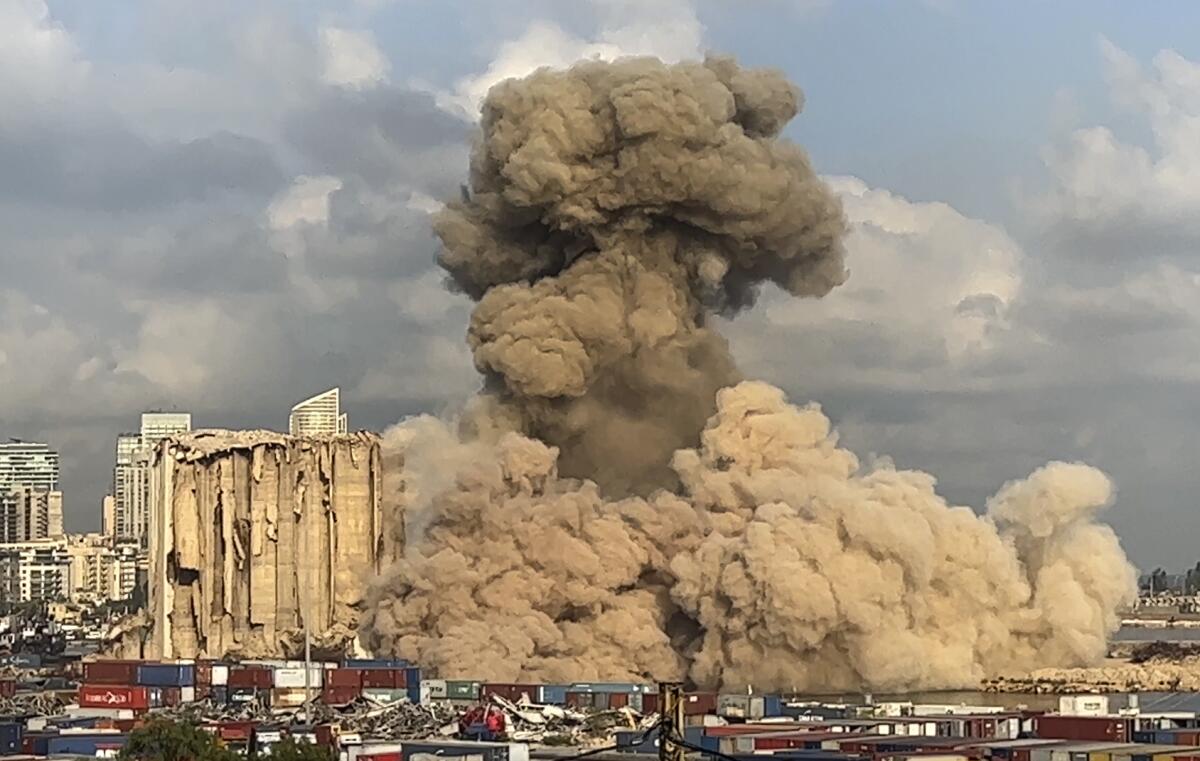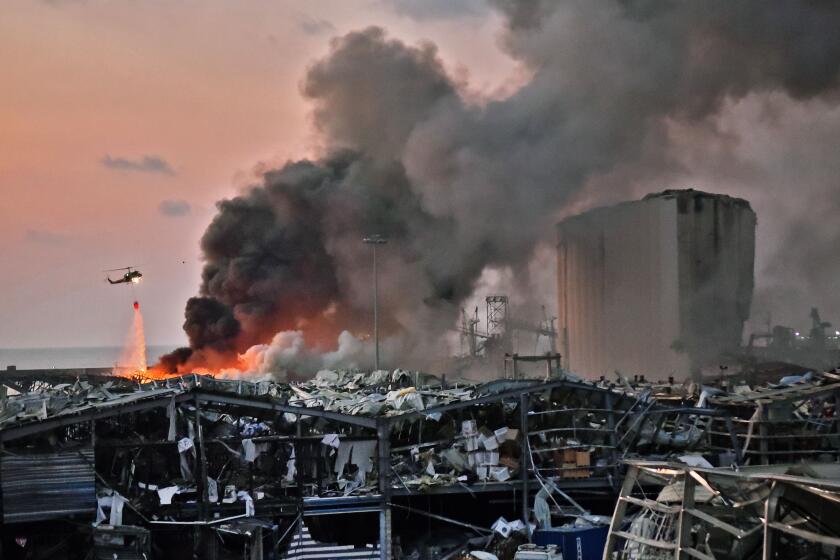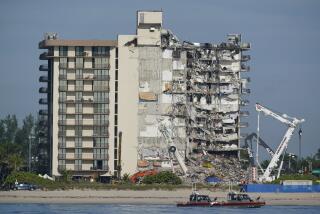Two years after Beirut blast, another smoldering section of port silos collapses

- Share via
BEIRUT — Another significant section of the devastated grain silos in Beirut’s port collapsed Tuesday in a cloud of dust, another painful reminder of the horrific August 2020 explosion that killed more than 200 people.
No injuries were reported. The area had long been evacuated following the blast.
The collapse left the silos’ southern part standing next to a pile of charred ruins. The northern block had been slowly tipping over since the initial explosion two years ago but rapidly deteriorated after it caught fire last month because of fermenting grains.
The 50-year-old, 157-foot-tall silos had mostly withstood the force of the Aug. 4, 2020, explosion and effectively shielded the western part of Beirut from the blast. Still, the explosion killed more than 200 people, injured more than 6,000 and badly damaged entire neighborhoods.
Emmanuel Durand, a French civil engineer who volunteered for a government-commissioned team of experts, told the Associated Press that the speed of the tilt rapidly accelerated overnight Monday, just hours before the collapse.
“There was a very sharp acceleration, which was expected,” Durand said. “When this happens, you know it’s going to go.”
The imposing grain silos at Beirut’s port mostly withstood last year’s massive explosion — but now serve as reminders of negligence and destruction.
The country’s acting environment minister, Nasser Yassin, told Lebanese TV that the government would now look into how to ensure that the southern block remains standing. He urged residents near the port to wear masks and said experts would conduct air-quality tests.
In April, the Lebanese government decided to demolish the silos, but suspended the decision following protests from families of the blast’s victims and survivors. They contend that the silos may contain evidence useful for the judicial probe and that the structures should stand as a memorial for the 2020 tragedy.
In July, a fire broke out in the northern block of the silos because of the fermenting grains. Firefighters and Lebanese Army soldiers were unable to put it out, and it smoldered for more than a month. Officials had warned that the silo could collapse, and feared risking the lives of firefighters and soldiers who struggled to get close enough to put out the blaze or drop containers of water from helicopters.
Survivors of the blast and residents near the port have told the AP that watching the fire from their homes and offices was like reliving the trauma from the 2020 port blast. That disaster was triggered by a fire in a warehouse near the silos that contained hundreds of tons of explosive ammonium nitrate, improperly stored there for years.
Los Angeles Times reporter Nabih Bulos was less than 500 yards from the center of the massive explosion in Beirut. He lived to tell the tale
The environment and health ministries in late July issued instructions to residents living near the port to stay indoors in well-ventilated spaces.
Durand said last month that the fire from the grains had sped up the speed of the tilt of the shredded silo and caused irreversible damage to its weak concrete foundation.
The structure has rapidly deteriorated since. In late July, part of the northern block collapsed for the first time. Days later, on the second anniversary of the blast, about one-fourth of the structure collapsed.
On Sunday, the fire spread to large sections of the silo.
More to Read
Sign up for Essential California
The most important California stories and recommendations in your inbox every morning.
You may occasionally receive promotional content from the Los Angeles Times.











